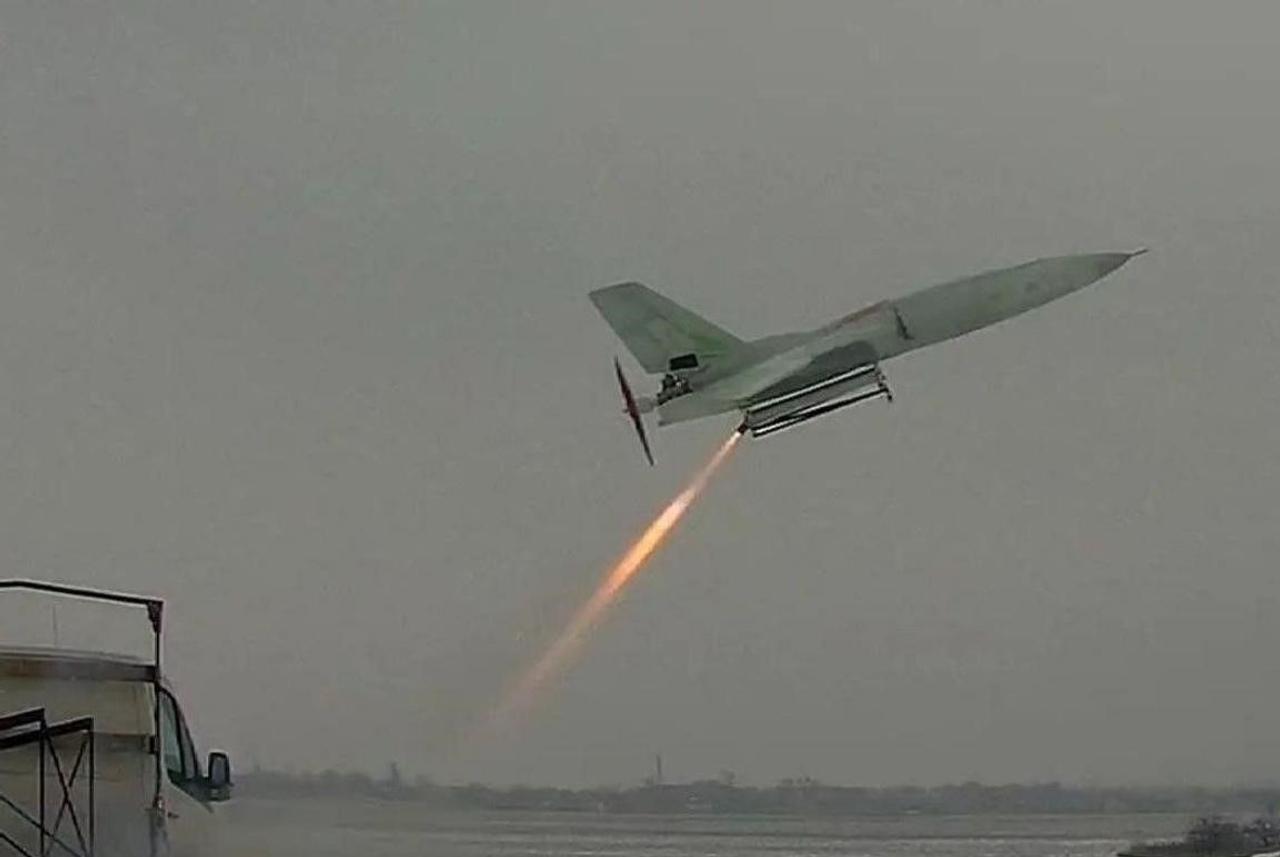
Ukraine has created its own kamikaze jet drone and demonstrated its launch
Ukrainian engineers from NAURocket have developed a kamikaze jet drone.
Ukrainian chemical scientist Serhiy Pipko and like-minded people gathered enthusiasts from the National Academy of Sciences and other universities and organized NAURocket, a student design bureau for experimental rocketry.
In 2018, they launched their first products: three rockets, 1.5 meters long and 75 mm in diameter, rose to an altitude of about 600 meters. These were the first successful launches of student rockets in Ukraine. A total of 5 missiles were designed then.
Sergiy Pipko spoke about the launch of a jet drone: “There is no need to assemble and disassemble the catapult, it can be launched with a very short guide or without a guide at all, from the spot. For example, from the back of a pickup truck or truck, stopping for just a minute. You can launch several drones per minute in a volley.”

The main advantage of such a launch is that it is a launch with a significant payload weight, i.e., an increase in the warhead.
“The overload during a rocket launch is much less than on a catapult, because the acceleration is not only on the guide, but also after descent from it. As a result, you can reduce the strength of the hull and lighten it by increasing the payload weight. But if you need a large payload, you can make a large one,” the scientist explains.
What seems simple in the launch video is not easy to implement in reality.
“If there are two or more accelerators, there is a chance that they will not start at the same time and will also finish their work repeatedly. This can cause the drone to go off course or spin. The problem can be solved, but it is quite difficult, so it is better to install one accelerator,” Pipko writes.
The scientist described several variants of accelerators:
- The accelerator is mounted in the tail of the UAV;
- the accelerator is mounted under the drone, closer to the tail and at an angle to the axis;
- The accelerator is mounted horizontally under the UAV, but the rocket engine nozzle is tilted downward.

